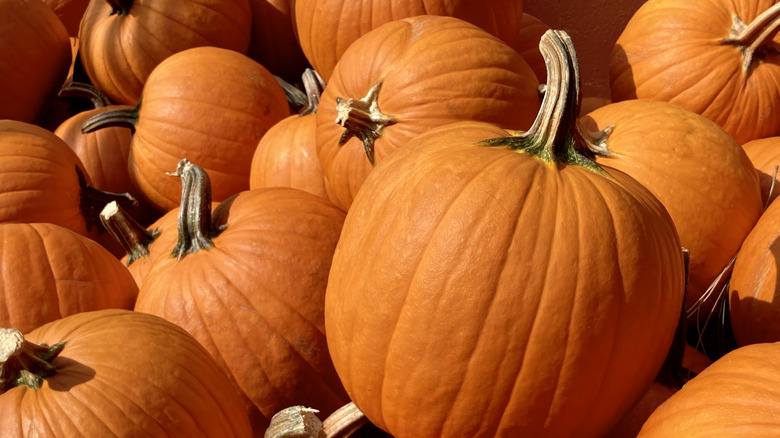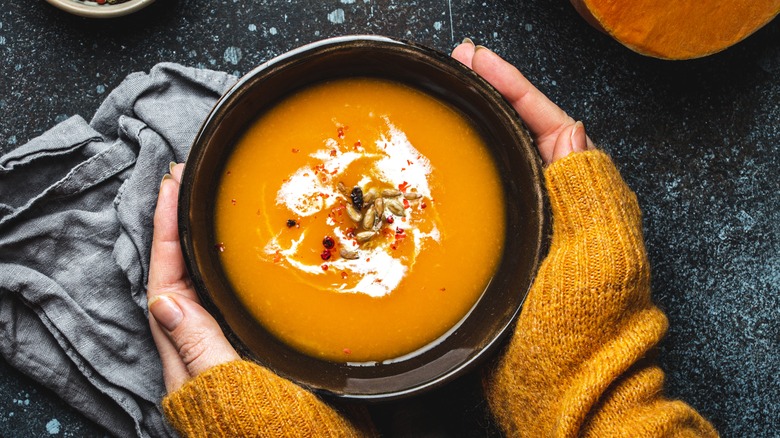Is A Pumpkin A Fruit Or A Vegetable?
Whether you're indulging in a pumpkin espresso martini or adding canned pumpkin to cornbread for a fall twist, there's no limit to how everybody's favorite gourd can be used to elevate countless foods. But while you're having a slice of pie or PSL, have you ever wondered if the pumpkin you're enjoying is a fruit or a vegetable? Well, we definitely have — and after some digging around, we found an answer.
While your knee-jerk reaction may be to classify pumpkins (which are winter squash) as veggies, they're actually considered to be fruits. This is because pumpkins and all squash contain seeds and develop from a flowering plant, two attributes that describe fruits from a biological perspective. In fact, pumpkins are scientifically considered berries(!), namely a subcategory called pepos. While it's not uncommon for fruits to be mistakenly considered vegetables — like tomatoes, cucumbers, and eggplant — the only "true" veggies with seeds are typically legumes, which include foods like peas or lentils. The more you know, right?
Getting your mind around pumpkins being a fruit may take some time, but it's not something you should stress yourself out about. The line between fruits and veggies has always been blurry, and at the end of the day, all of them are nutritious and delicious.
How to enjoy pumpkin in recipes
If you're heading out to grab some pumpkins for carving or painting, keep in mind that using fresh ones in a variety of dishes is another way to make sure that autumn's harvest doesn't go to waste. While all pumpkins are edible fruits, "sugar" or "pie" varieties are less stringy and watery than the jack-o-lanterns you get from the field. If you live in a region with plenty of cooking pumpkins available (like Illinois, the U.S. state that grows the most pumpkins), you may buy so many during the fall that getting creative is your best bet.
While some people scoop out the insides of a pumpkin to throw away, don't forget that the seeds have a ton of nutritional benefits, like anti-inflammatory effects. They can be eaten either raw or roasted as a stand-alone snack, or added as a crunchy topping to an autumn salad. Additionally, the flesh of the pumpkin can be roasted, stewed, or simmered to soften it up enough to make your own pumpkin puree.
What's exciting about this winter squash is that it works in both sweet and savory dishes. For example, it can be used in pumpkin pancakes, pies, or cinnamon rolls. If you're looking to use it for dinner, adding pumpkin to cozy fall pastas or a creamy autumnal soup is the way to go. And while fresh pumpkins are fun to work with, canned pumpkin is an easy and convenient way to use this seasonal fruit.


